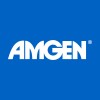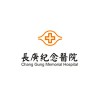
YN001 in Healthy Subjects and Patients With Coronary Atherosclerosis
Atherosclerotic Cardiovascular DiseaseThis study consists of two parts. Part I (phase Ia) is a randomized, double-blind, placebo-controlled, single and multiple ascending dose study in healthy adult subjects. Part II (phase Ib) is a multicenter, randomized, controlled, open label, multiple ascending dose study in patients with coronary atherosclerosis.

The Role of Anifrolumab in Improving Markers of Vascular Risk in Patients With Systemic Lupus Erythematosus...
Systemic Lupus ErythematosusCardiovascular Disease1 moreBackground: People with systemic lupus erythematosus (SLE) are at risk of developing complications in their blood vessels. This can increase the risk of heart attacks or stroke. No medications have been effective at reducing this risk in people with lupus. Objective: To test whether a drug (anifrolumab) can improve blood vessel function and reduce blood vessel inflammation in people with SLE. Eligibility: People aged 18 to 80 years with SLE. Design: Participants will undergo screening. They will have a physical exam. They will have blood and urine tests. They will have a test of their heart function and a chest X-ray. They will answer questions about their SLE symptoms. Participants will visit the clinic 9 times in 8 months. After screening, visits will be 4 weeks apart. Each visit may take up to 4 hours. Participants will receive infusions from a tube attached to a needle inserted into a vein in the arm (IV). Some will receive anifrolumab. Others will receive a placebo treatment. They will not know which one they are getting. At some visits they will have additional tests: CAVI (cardio-ankle vascular index) tests blood vessel function. Participants will lie still for 20 minutes. Small electrodes will be placed on both wrists with stickers. A microphone will be placed on their chest. Blood pressure cuffs will be wrapped around their ankles and arms. FDG-PET/CT is an imaging procedure. Participants will receive a substance through an IV line. They will lie on a table for 110 minutes while a machine captures images of their body.

Olpasiran Trials of Cardiovascular Events and Lipoprotein(a) Reduction (OCEAN(a)) - Outcomes Trial...
Atherosclerotic Cardiovascular DiseaseThe primary objective of this study is to compare the effect of treatment with olpasiran, to placebo, on the risk for coronary heart disease death (CHD death), myocardial infarction, or urgent coronary revascularization in participants with atherosclerotic cardiovascular disease (ASCVD) and elevated Lipoprotein(a).

Colchicine Effect on Perivascular Inflammation Index on Coronary CTA
AtherosclerosisInflammatory Response1 moreInflammation is an important pillar of atherogenesis in coronary disease. Studies have documented the prognostic power of measuring coronary perivascular adipose tissue attenuation (PVAT) and its good correlation as an early inflammatory biomarker in the atherogenesis process, in addition to being a predictor for cardiovascular events in the future. Colchicine, a medication with well-documented anti-inflammatory action and with an impact on reducing cardiovascular outcomes, may have an action in reducing FAI (fat attenuation index). This study aims to evaluate the effect of colchicine in reducing coronary perivascular inflammation.

Investigation of Metformin in Pre-Diabetes on Atherosclerotic Cardiovascular OuTcomes
Prediabetic StateAtherosclerosis1 moreThis research will help us to learn if the medicine called metformin reduces the risk of death, heart attacks, and/or strokes in patients who have pre-diabetes and heart or blood vessel problems.

ZENFlex-Registry to Evaluate the Outcome of Bare Metal Stent-assisted Angioplasty
Atherosclerosis of Femoral ArteryA prospective, multi-center, single-arm registry to evaluate the safety and efficacy of bare metal stent-assisted percutaneous transluminal angioplasty (PTA) in the treatment of superficial femoral and/or proximal popliteal artery (P1) lesions in patients with symptomatic peripheral artery disease

Effect of Pyramidal Training on Selected Risk Factors of Atherosclerosis
ObesityAtherosclerosisThe study will be conducted on fifty women with central obesity. Their ages will be from 30-40 years old. They will be selected from Al Hayat specialized Hospital in Cairo, Egypt and The participants will be randomly assigned into two equal groups: Group (A): study group, 25 participants will receive pyramidal training by treadmill for 40 minutes per session three sessions per week for eight weeks in addition to the diet health advices. Group (B): Control group, 25 participants will receive diet health advices. The subjects will be selected from El Haya specialized Hospital, Cairo.

Effects of Pitavastatin or Combination of Pitavastatin and Ezetimibe on Glucose Metabolism Compared...
DyslipidemiasAtherosclerotic Cardiovascular DiseaseThe purpose of this study was to investigate the effect of pitavastatin or pitavastatin and ezetimibe combination therapy on glucose metabolism compared to atorvastatin in patients with atherosclerotic cardiovascular disease with metabolic syndrome.

Trial of PCSK9 Inhibition in Patients With Acute Stroke and Symptomatic Intracranial Atherosclerosis...
Intracranial AtherosclerosisAcute Ischemic Stroke1 moreThis study will evaluate whether low-density lipoprotein (LDL-C) lowering with alirocumab results in greater change from baseline in intracranial atherosclerotic plaque at week 26 than control in adults with acute ischemic stroke from intracranial atherosclerosis taking lipid lowering therapy.

Statins and prOgression of Coronary atheRosclerosis in melanomA Patients Treated With chEckpoint...
MelanomaAtherosclerosisThis study will incorporate a prospective randomised open blinded end-point trial in participants with stage 2, 3 or 4 melanoma treated with ICI to evaluate the impact of statin therapy on changes in coronary plaque burden and composition.
